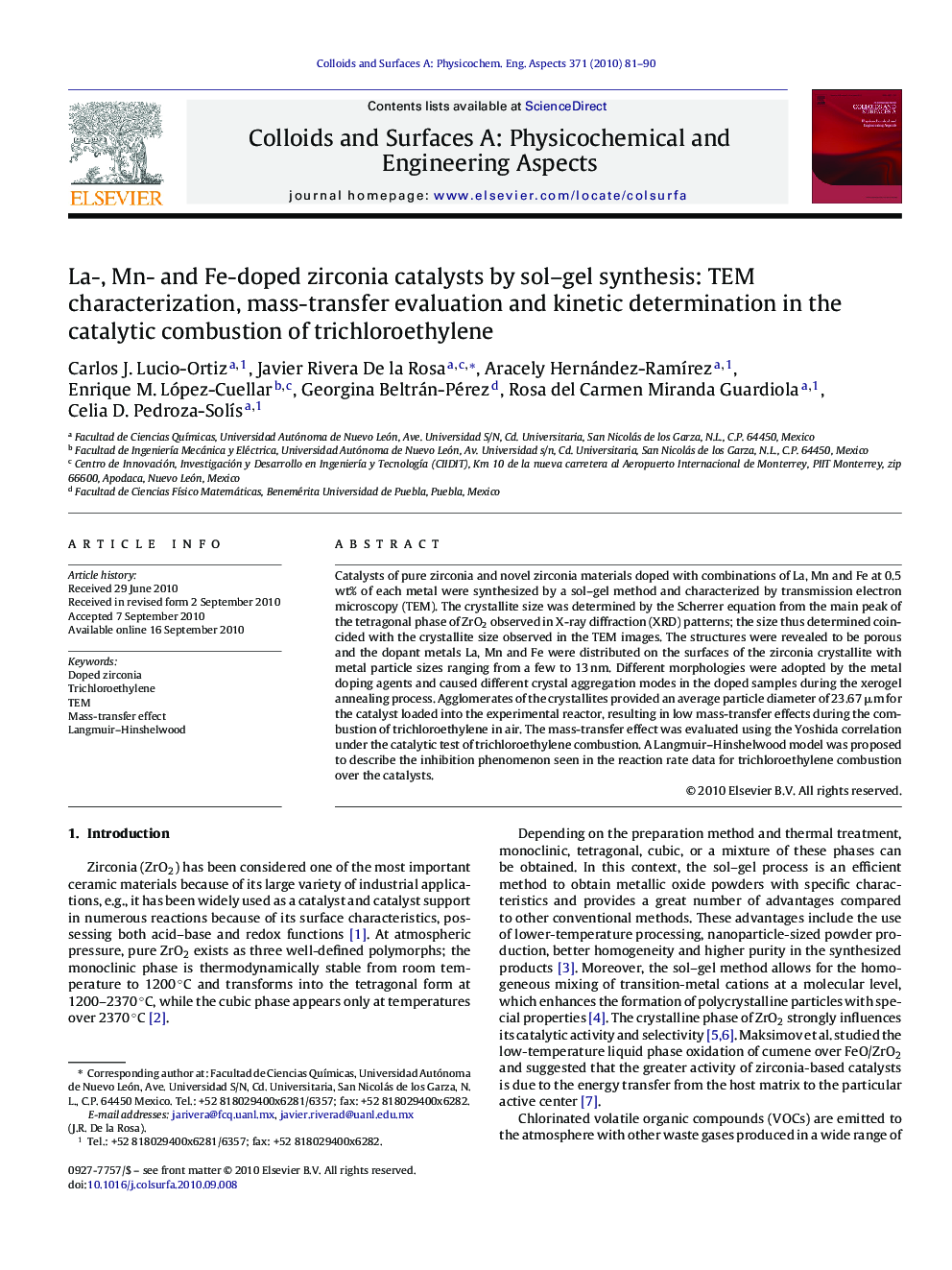| Article ID | Journal | Published Year | Pages | File Type |
|---|---|---|---|---|
| 595114 | Colloids and Surfaces A: Physicochemical and Engineering Aspects | 2010 | 10 Pages |
Catalysts of pure zirconia and novel zirconia materials doped with combinations of La, Mn and Fe at 0.5 wt% of each metal were synthesized by a sol–gel method and characterized by transmission electron microscopy (TEM). The crystallite size was determined by the Scherrer equation from the main peak of the tetragonal phase of ZrO2 observed in X-ray diffraction (XRD) patterns; the size thus determined coincided with the crystallite size observed in the TEM images. The structures were revealed to be porous and the dopant metals La, Mn and Fe were distributed on the surfaces of the zirconia crystallite with metal particle sizes ranging from a few to 13 nm. Different morphologies were adopted by the metal doping agents and caused different crystal aggregation modes in the doped samples during the xerogel annealing process. Agglomerates of the crystallites provided an average particle diameter of 23.67 μm for the catalyst loaded into the experimental reactor, resulting in low mass-transfer effects during the combustion of trichloroethylene in air. The mass-transfer effect was evaluated using the Yoshida correlation under the catalytic test of trichloroethylene combustion. A Langmuir–Hinshelwood model was proposed to describe the inhibition phenomenon seen in the reaction rate data for trichloroethylene combustion over the catalysts.
